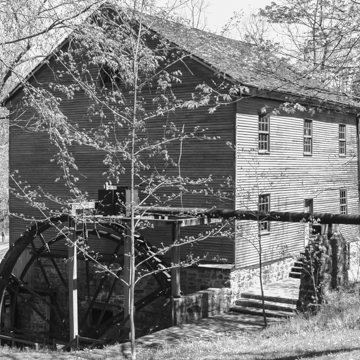An outstanding example of the functional beauty of nineteenth-century industrial architecture, the wood frame and stone gristmill was constructed by McKean and McGowan to serve the needs of the ironworkers' community in 1840. When Juniata Iron Works closed in 1848, William Shoaff purchased the mill and improved its productivity. His son, Ellis, replaced the wooden waterwheel in 1906 with a steel wheel thirty-one feet in diameter, reputedly one of the largest east of the Mississippi. In continuous operation from 1840 to 1940, the mill retains much of its original equipment and is still used to grind cornmeal and cider apples.
You are here
Shoaff's Mill
If SAH Archipedia has been useful to you, please consider supporting it.
SAH Archipedia tells the story of the United States through its buildings, landscapes, and cities. This freely available resource empowers the public with authoritative knowledge that deepens their understanding and appreciation of the built environment. But the Society of Architectural Historians, which created SAH Archipedia with University of Virginia Press, needs your support to maintain the high-caliber research, writing, photography, cartography, editing, design, and programming that make SAH Archipedia a trusted online resource available to all who value the history of place, heritage tourism, and learning.















